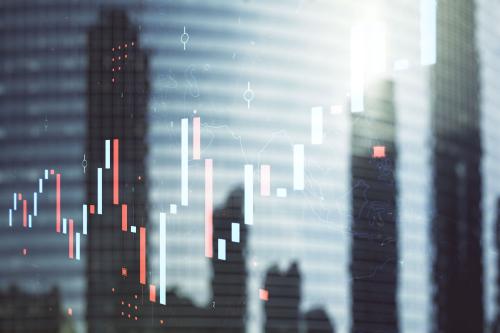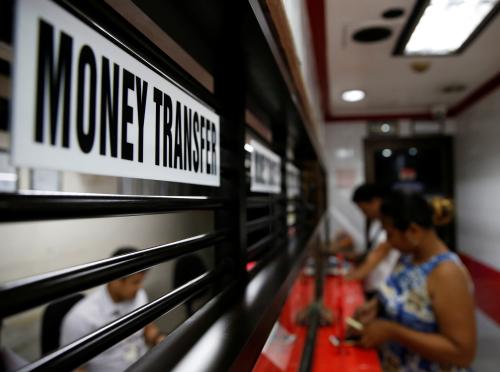At the end of each week, one of the rotating editors for Future Development—Shanta Devarajan, Wolfgang Fengler, Indermit Gill, or Homi Kharas—provides recommended literature on a specific development topic.
Last week, I was part of the global retreat for my unit at the World Bank in Washington, D.C. World Bank retreats are wonderful for two reasons: First, you see the beauty of a diverse global institution where its staff come from all corners of the world. Second, you hear from some of the thought leaders on emerging subjects, such as cryptocurrencies, which we recently covered in a blog post.
Michael Casey from MIT kicked off the event with an impressive presentation about The Truth Machine: The blockchain and the future of everything. Casey clearly traced the blockchain back to the fundamental characteristics of the human species, which is to find arrangements to co-exist. In this logic, the blockchain will initiate a new phase of how we relate to each other, at least financially. The world’s financial history dates back to the introduction of “symbolic markers with no inherent value,” as Casey states it, such as coins and paper notes. Another breakthrough in our financial history was the introduction of double entry bookkeeping by Giovanni de’ Medici, which paved the way for modern banking where multiple parties could receive and give credit. Without this innovation, the Italian renaissance and possibly the advent of modernity may have never occurred.
However, until recently, financial transactions still faced high transaction cost and risk of fraud. According to Casey, the blockchain can help overcome these challenges, especially the “double spend problem,” i.e., that the same person or entity spends the money twice. Its distributed ledger is almost impossible to break, or only at costs that would outweigh the benefits of breaking it. If you want to learn in simple terms how it works watch his previous talk from November 2017.
Bhaskar Chakravorti from the Fletcher School of Law and Diplomacy at Tufts University gave an equally eloquent talk focusing also on the downsides of the ongoing transformation asking: Do We Trust the Digital Planet? Building on his Tuft Talks from December 2016, he showed how teenagers in a small town in Macedonia influenced the U.S. elections with fake news, possibly more than any world power. In his earlier talk, Chakravorti also presented the results of Tuft’s Digital Evolution Index (DEI), which also illustrates Europe’s digital crisis. The DEI also confirms what research on the global middle class already found: Asia will keep rising because of the combination of momentum and population.
The peak of the retreat was World Bank President Jim Kim’s address to the audience. He focused on the role of education in the digital revolution and the risks that malnutrition would generate lost generations in some countries. As highlighted in his 1+6 round table speech in September 2017 in Beijing, President Kim noted:
“We believe that the premium on human capital will get higher and higher every year. The demands for digital competency are accelerating. Automation will replace scores of tasks, which will eliminate many of the less complex and low-skilled jobs. The remaining jobs will demand new and more sophisticated skills. So, it’s crucial that all countries invest early in their people.” However, right now, “156 million children worldwide are stunted—which means that their brains don’t develop properly. They will be locked into lives of poverty and exclusion before they reach their fifth birthday.”
While the digital revolution promises to change much in our world for the better, there are many at risk of losing out on the benefits. We should not lose sight of that.







Commentary
Future Development Reads: The truth machine and the pitfalls of the digital transformation
February 9, 2018